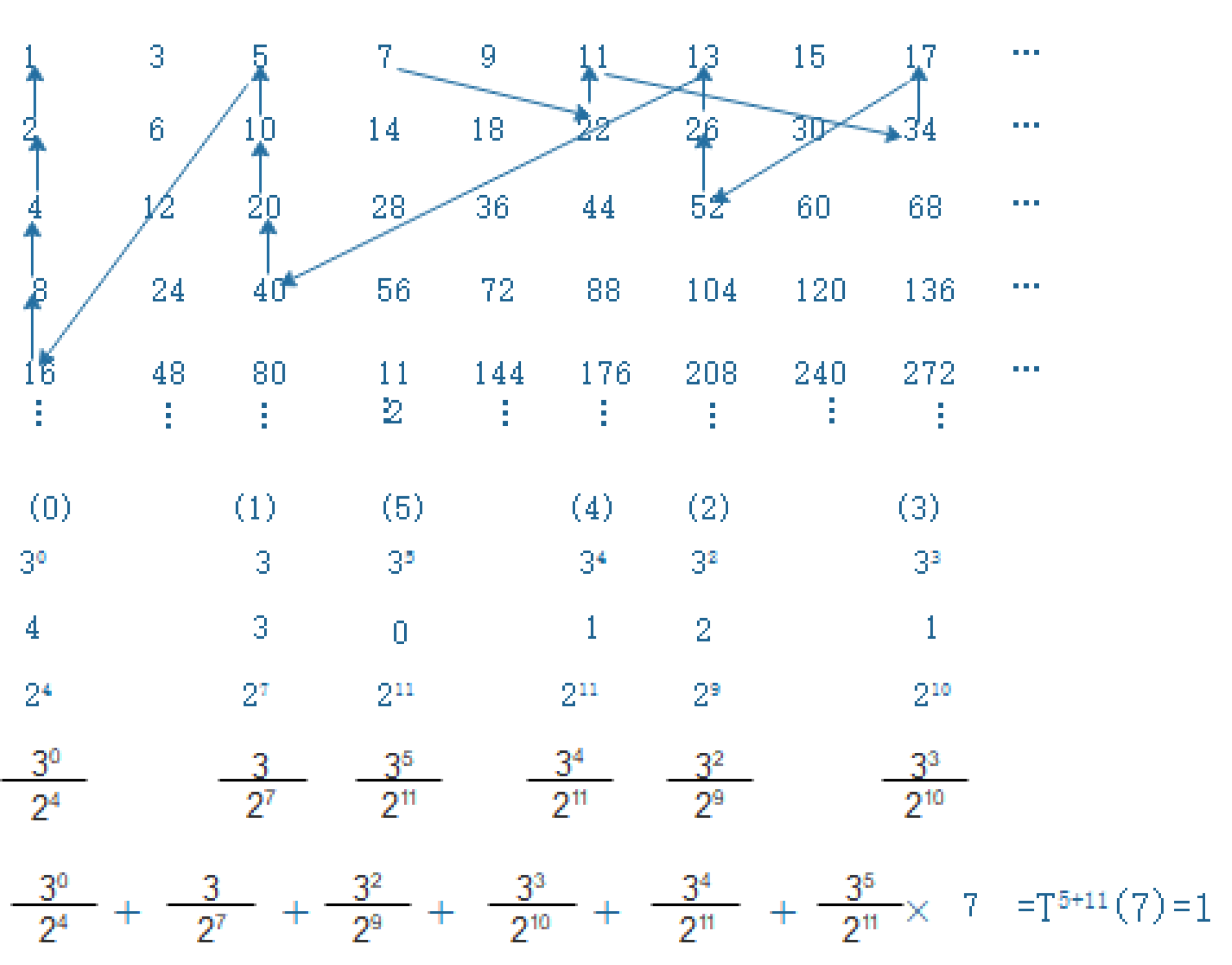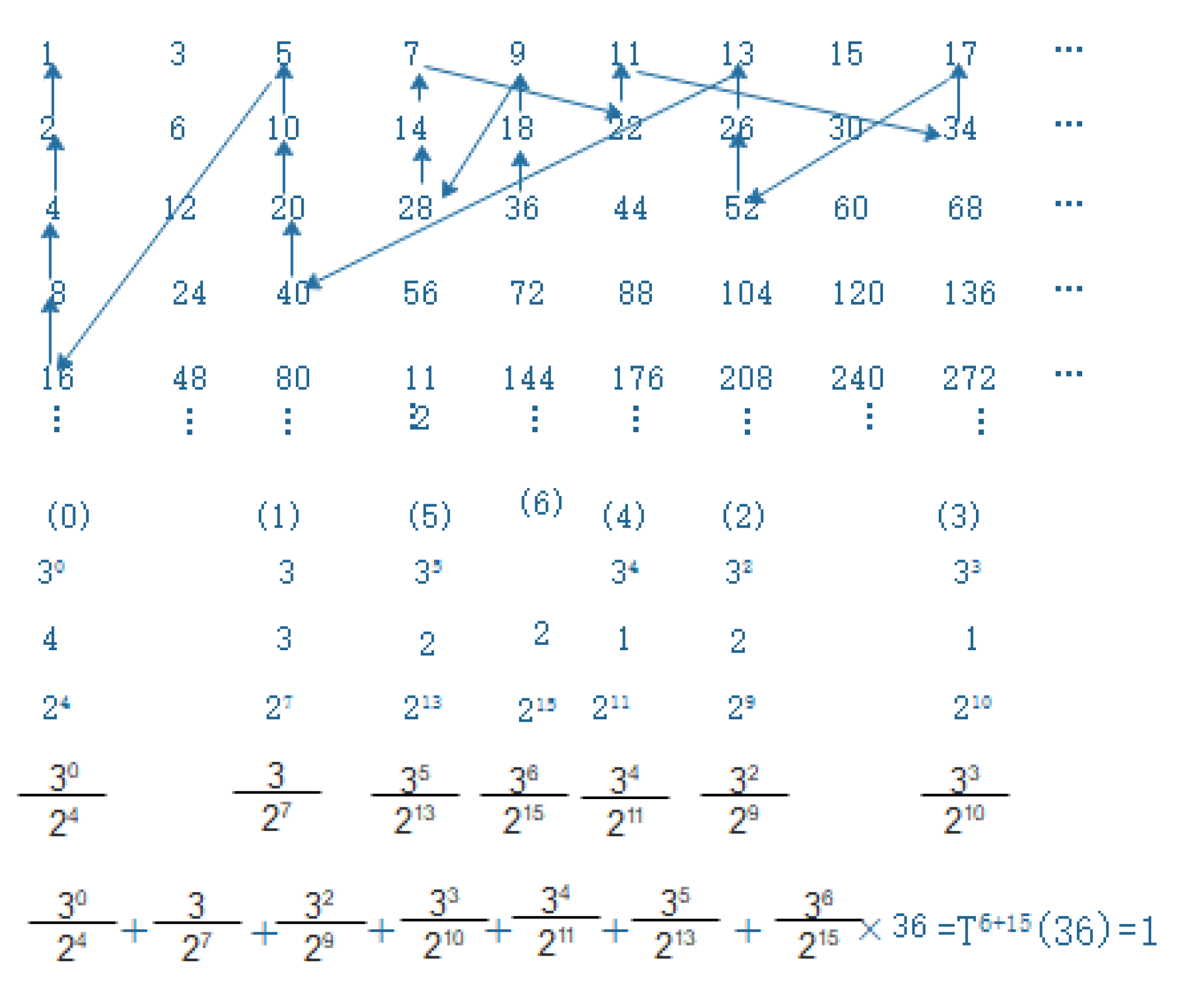Submitted:
22 January 2023
Posted:
23 January 2023
Read the latest preprint version here
Abstract
Keywords:
MSC: 11B25; 11B83; 03D20
1. Introduction
2. Terminology and notations
3. Proof of the Collatz Conjecture
3.1. The modified Sarkovskii ordering and integer lattice
3.2. The algebraic formula and Collatz graph
4. Numerical example
5. Conclusion
References
- Jeffrey, C. Lagarias. The 3x + 1 Problem and Its Generalizations. American Mathematical Monthly; Vol. 92, No. 1, pp 3-23.(1985).
- Jeffrey, C. arXiv:2111.02635.
- Stefan, P. A Theorem of Sarkovshii on the existence of periodic orbits of continuous endomorphisms of the real line. Commun. math. Phys. 54, 237-248(1977).
- Li, T. Li, T., Yorke, J. A. Period three implies chaos. Am. Mat. Monthly 82, 985–992 (1975).
- TERENCE TAO, Almost all orbits of the Collatz map attain almost bounded values. 2022, arXiv:1909.03562v51, 15.
- Jishe FENG, Xiaomeng WANG, Xiaolu GAO, Zhuo PAN. The research and progress of the enumeration of lattice paths. Frontiers of Mathematics in China, 2022, 17(5): 747-766.
- Alf Kimms. The structure of the 3x+1 problem, Electronic Journal of Graph Theory and Applications, 9(1)(2021),157–174.


Disclaimer/Publisher’s Note: The statements, opinions and data contained in all publications are solely those of the individual author(s) and contributor(s) and not of MDPI and/or the editor(s). MDPI and/or the editor(s) disclaim responsibility for any injury to people or property resulting from any ideas, methods, instructions or products referred to in the content. |
© 2023 by the authors. Licensee MDPI, Basel, Switzerland. This article is an open access article distributed under the terms and conditions of the Creative Commons Attribution (CC BY) license (http://creativecommons.org/licenses/by/4.0/).



